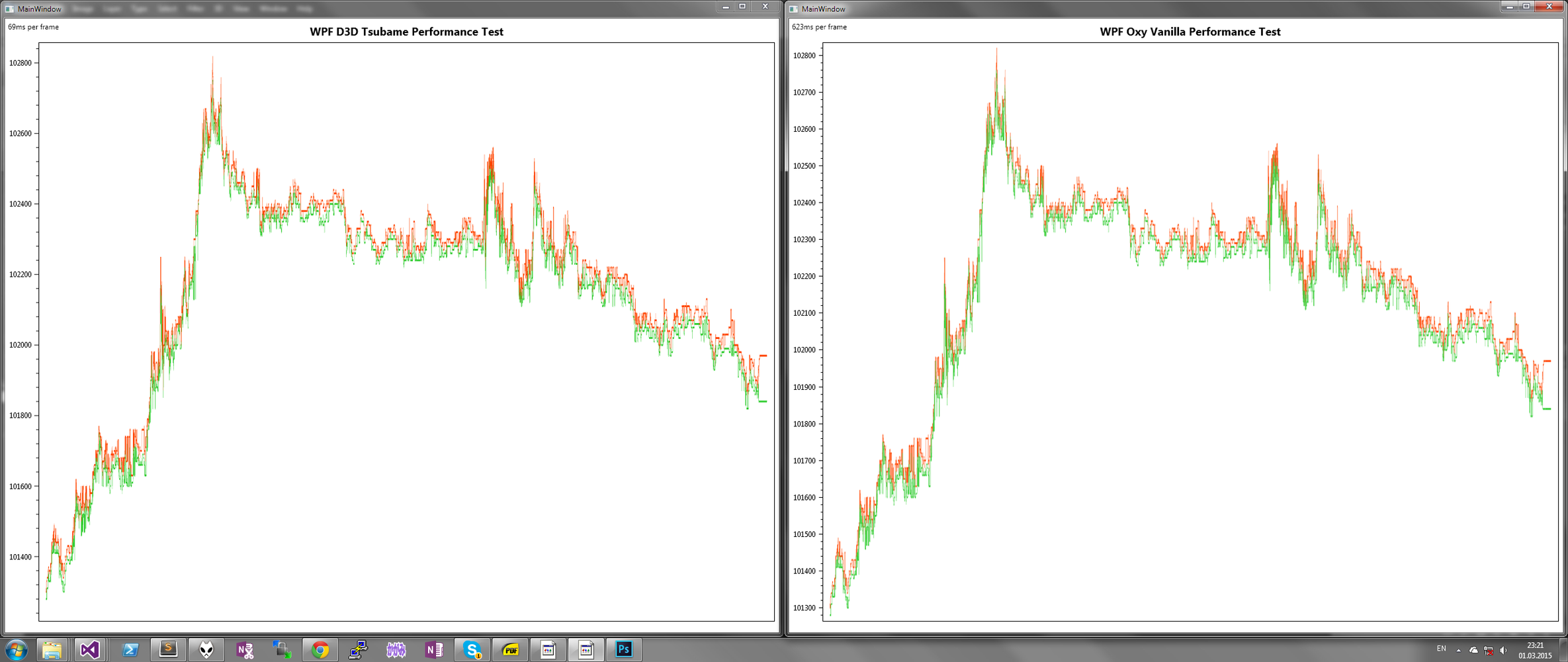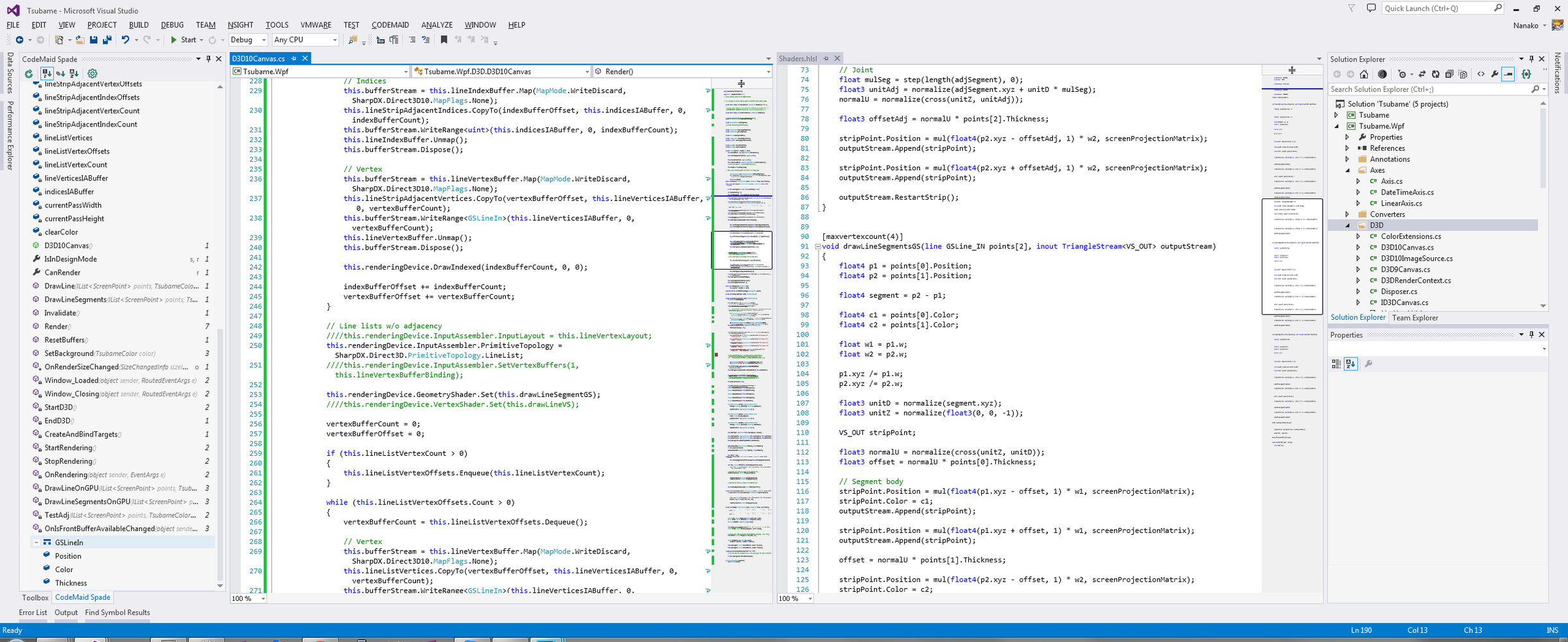
+17
Under review
Direct3D 10 Renderer fork of OxyPlot, I've done it
69ms vs 623ms per frame on two StairStep series with 35182 points each, approx. 1.6Mb of binary data

Works only on Direct3D10, but I assume it can be ported to Direct3D9
The problem is: I want to contribute to OxyPlot, but I guess I'd better put an opensource fork with credits, so someone can port rendering from it to Oxy. Rendering is kinda heavily optimised now, all up to LineSeries itself, and I will continue to get rid of unnecessary stuff. Right now actual rendering is mostly carried out by geometry shaders. I push raw points' data in screen coords to the vertex buffers as line lists and strips, and shaders process it into triangle stripes. Now, for example, I'm moving line clipping routines to the vertex shader stage frustum culling. I'd like to move screen coords transformation to the shader stage too in the nearest future.
So stay tuned, major performance breakthrough for OxyPlot is near.


Works only on Direct3D10, but I assume it can be ported to Direct3D9
The problem is: I want to contribute to OxyPlot, but I guess I'd better put an opensource fork with credits, so someone can port rendering from it to Oxy. Rendering is kinda heavily optimised now, all up to LineSeries itself, and I will continue to get rid of unnecessary stuff. Right now actual rendering is mostly carried out by geometry shaders. I push raw points' data in screen coords to the vertex buffers as line lists and strips, and shaders process it into triangle stripes. Now, for example, I'm moving line clipping routines to the vertex shader stage frustum culling. I'd like to move screen coords transformation to the shader stage too in the nearest future.
So stay tuned, major performance breakthrough for OxyPlot is near.

Customer support service by UserEcho


Is it based on SharpDX? Any other dependencies?
10 times faster rendering sounds good. But does this project dead?
Can you please upload an example in which the performance with SharpDX definitively is better? That really helps, and thank you indeed.